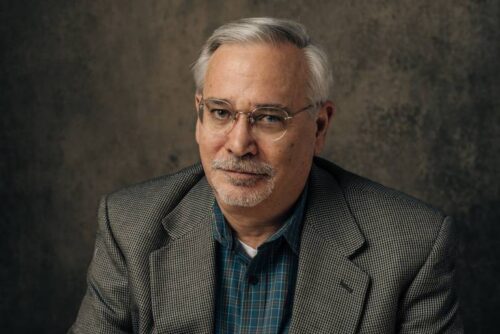
Dear Goodnight Raleigh readers,
It is with a heavy heart that I announce the June 30, 2018 passing of Karl Edward Larson, known to readers and friends alike as Raleigh Boy. He battled a brief illness with optimism and strength.
Karl came of age in the 1960s, a time of energetic and abrupt transition in Raleigh. Citizens watched as the city changed some with anger, some with hope. Karl was able to view the changes in an historical perspective. Perhaps influenced by his father’s love of history, he recognized at a young age that the new construction, urban renewal and demolition of historic Raleigh homes and buildings were worth documenting”and document he did. He rode the streets of Raleigh by bike with his Kodak Instamatic camera, snapping photographs of his changing city. He recorded the growth, destruction, stagnation, rot and every crack in between. In so doing, he formed a bond with his hometown that would never waver.
Raleigh was Karl’s primal landscape–the benchmark on which he compared all others. He devoted countless hours to studying Raleigh’s history; filing away not only names and dates, but astute historical analysis peppered with the right amount of perspective, imagination and curiosity.
Those of you who had the pleasure of his company know of his humble and kind nature, engaging conversation and unmistakable laugh–a sometimes quite raucous “YUK, yuk, yuk!” often accompanied by “Lordy mercy!” or “Girl, I swear!” It was rare that I saw Karl in a state anything short of a decent mood. His infectious conviviality earned him many friends. I considered him my best friend, but he wasn’t the type to choose favorites. In addition to friendship, Karl taught me volumes of Raleigh history, but what he didn’t teach me, I learned myself using skills he taught me about research, how to objectively and fairly perceive and analyze the past, and how to notice and remember details.
For nearly a decade, Karl’s posts on Goodnight Raleigh have entertained and educated many thousands. Thankfully, that will continue as his voice lives on in written word. His legacy and monument lie in the great numbers of people he touched through friendship, educated and instilled within a stronger sense of place.
Goodnight, Raleigh Boy. Requiescat in pace.
You can read more about Karl’s life here: https://www.newsobserver.com/opinion/article214803170.html






 Sign up for the Newsletter
Sign up for the Newsletter